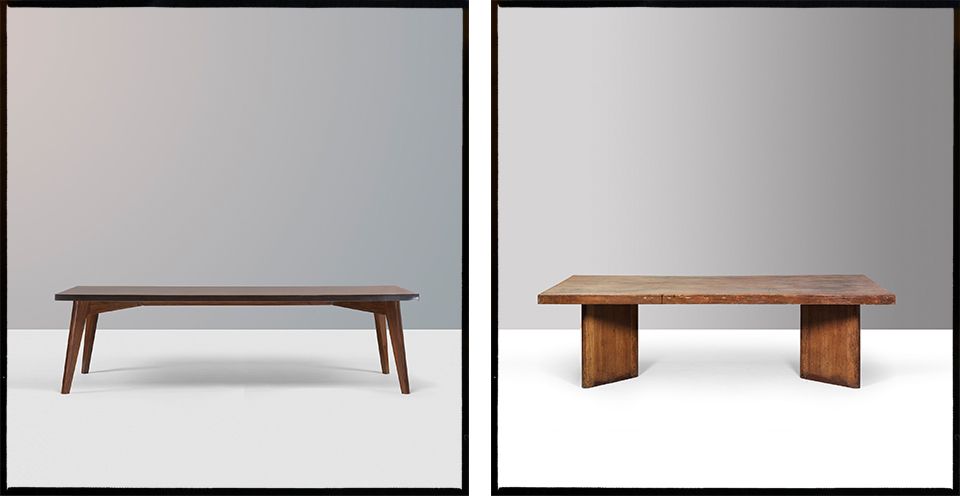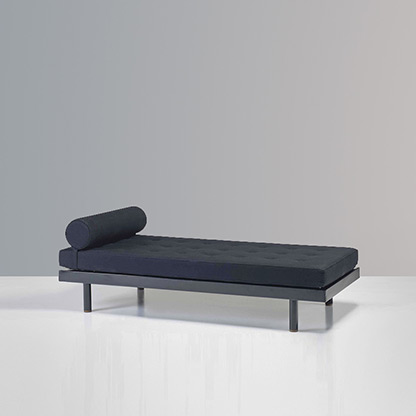
Interview with Pedja: Design as clone of the soul
I love Le Corbusier and his cousin Pierre Jeanneret, both of whom left us fantastic buildings. There must be a reason why we consider them to be among the most important architects of the 20th century (laughs). Most architectural theorists respect their work because it promoted the concept of modernity, but what makes their opus so rich are the existential questions it raises, which give their designs a spiritual dimension.
But they designed for a modern society promoting science-based rationalism. That contradicts your point of view.
Of course, and Chandigarh is a city that aimed to create an ideal of a modern and rational way of living. But, to be honest, their buildings were often complicated and not very functional (laughs). But they were also able to invest their rational ideology with an irrational and metaphysical aspect. Le Corbusier once defined architecture as serv- ing the beast, the heart and the spirit (servir à la bête, et au coeur, et à l’esprit). That is quite anti-rational, and emphasises the animalistic aspect of perception. Behind the rational facade there exists a deeper layer, one that touches our soul.
Is that the key to understanding their objects and architecture?
I believe so, but I would avoid the word ‘understanding’. Art is a medium that works with images and creates many different sense impressions. Some appear illogical and are not always even clearly understandable, so art acts more like an oracle. Through art we get a vision of the meaning of eternity, life, death, freedom, grandeur, play- fulness or banality. The abstract nature of art encourages us to pose questions, which can be quite existential. Finally, we are concerned less about the artwork itself and more about its ability to express emotions or spiritual ideas, which are more profound than rational thought.
Can a simple table really contain such complexity?
Sure, otherwise it wouldn’t touch us. For example, the Conference table1 by Jeanneret looks really banal, and the proportions are clumsy. But that roughness also expresses radicality, thus provoking essential questions about being. This table represents purity, as if everything superfluous has been erased. We become curious about the existential or the unspoiled. Here art and design prompt us to reflect on ourselves and our inner being.
So you think the table shows some deeper truth?
Yes, in a way, but not as you think. Everything in Pierre Jeanneret‘s design appears to be pragmatic and honest, but truth in art is always an illusion. There is this fascinating contradiction in trying to appear true, which Pierre Jeanneret understood and played with. So, for the library table he designed a thick top, giving the impression of a single, solid piece. But when we look under the top we can see only the border is thick and the rest is thin. Truth and illusion are both present and show a specific world view.
That is what touches me most. These pieces are tools to understand our- selves, which are eternal topics and always relevant. I don’t care about zeitgeist and mannerist questions, I need depth to become stimulated. However, I think that each person is touched by these objects in a different way: by their formal simplicity, informality, rough character, and rich patina, which bring each piece alive, and by the incredible story of these beautiful pieces, discarded in the 1990s like trash. There are so many layers in his objects and you see a new one each time.
Why are these design pieces priced so high today?
The topic of value is completely different from that of quality. OK, these objects are expensive because the most important 20th-century duo of architects designed them. Each piece is unique, with different dimensions, and quite different to the industrialised mass production of someone like Eames, Mies van der Rohe or Kjaerholm. Now that Chandigarh has finally become a World Heritage Site it is attracting much more attention. Additionally, these pieces have an incredible patina, which shows their history and this is quite rare for modern furniture. In economic terms, value reflects how rare and important an artwork is – issues that are essential for me as a gallery owner. But if you want to approach these objects more deeply, you need to have your own response and avoid preconceptions.
Don’t you think it’s perverse that this design for poor people has become so expensive?
Le Corbusier and Pierre Jeanneret made designs for rich and poor in the same way. They were looking for a language that suited humans but not one for any specific social class.
But now people pay €100,000 for a table by Pierre Jeanneret – isn‘t that crazy?
It‘s probably crazy if you have no money. If you can afford it, then your budget is higher and it looks different. Imagine that you are very rich and can choose between a good table that costs €1000 and my fantastic table costing €100,000. If you don’t have to worry about money, why would you buy the cheap one? My table is magical, look, it’s a primitive artefact – ascetic roughness, archetypical shape, its generosity. Additionally, this is one of the most important tables of the 20th century. That is the beauty of money (laughs), you can ex-change it for something spiritual, like this piece of design. Yes, it may be perverse to pay €100,000 for a table, but I do it too. I’m not afraid to do things like that.

